Pure Learning

The Columbia River begins in the soaring Rocky Mountains of British Columbia, Canada. It flows south into the US state of Washington, before turning west creating a border between western Washington and Oregon. Tributaries along its length drive the Columbia to become the fourth largest river in the US, before emptying into the Pacific Ocean.
The Columbia River had its mouth in Willapa Bay, in recent geologic history. The river has since migrated southward. Sandy sediments deposited by the Columbia along its former course formed Long Beach Peninsula, the western border of the Willapa Bay, and Goose Point Peninsula.
History
Human inhabitants began subsisting on Columbia River Salmon 3500 years ago. Bruno de Heceta was the first European to document discovery of the mouth of the Columbia River in 1775. American captain Robert Gray was first enter the river as part of a fur trading mission on his ship named Columbia Rediviva.
The Hudson's Bay Company (HBC) established Fort Vancouver on the bank of the Columbia in 1825. The Hudson's Bay Company shifted to exporting other goods such as salmon and lumber following a sharp decline in the fur trade in 1830. Salmon and lumber remain the mainstays of commercial operations in the lower Columbia region today.
Environment and Conservancy
The indigenous people, the early explorers and the settlers all knew how special the Pacific Northwest is. The highly productive lands and waters are set in an area with stunning natural beauty. The lower Columbia River basin supports a huge diversity of life including Bald Eagles, Sandhill Cranes, Black Bears, Elk, Gossamer Winged Butterflies, Western Red Damsel dragonflies, Pacific Tree Frogs and Bitter Nightshade, to name a few. There are several species of anadromous fish that migrate between the Pacific Ocean and fresh water tributaries of the river, including: Sockeye salmon, Coho and Chinook (also known as "king") salmon, and steelhead.
Half of Willapa Bay becomes exposed at low tide, creating 40,000 intertidal acres that provide ideal habitat for oysters and white and green sturgeon. Residents, conservancy organizations and governments work to protect the Columbia River basin and the diverse wildlife while providing a harmonized environment for people to enjoy.
Fisheries
Salmon and oysters provided the core subsistence for native peoples, including the Chehalis, Chinook, and Willapa.
Sport fishing remains a large draw for recreation enthusiasts interested in catching Salmon, Steelhead and trout or digging for Pacific oysters and Eastern softshell, Razor and Manila clams.
Fishing and processing of salmon, oysters, Dungeness crab and Manila clams drive commercial fisheries in the region.
